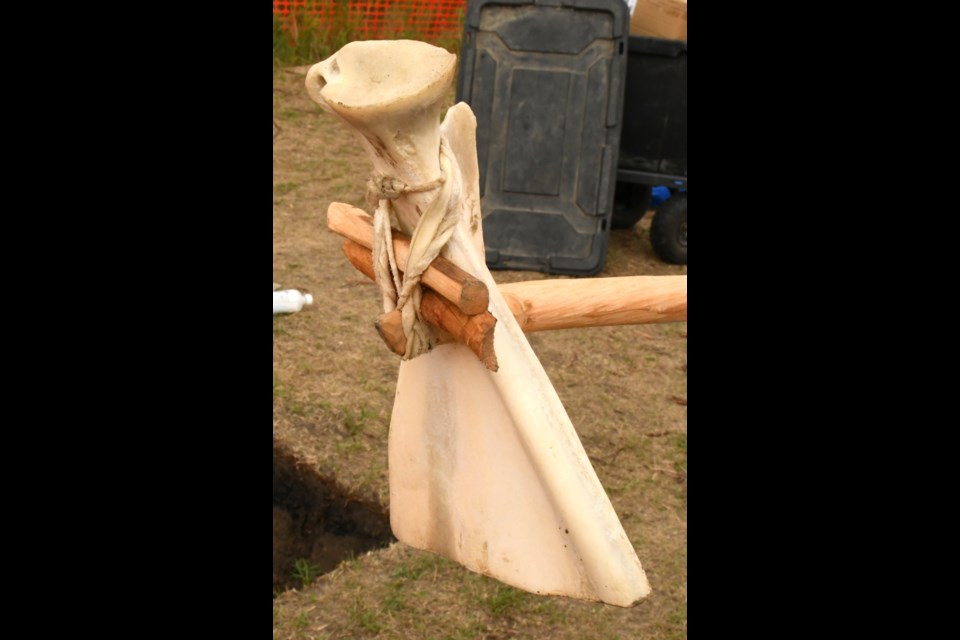MOOSE JAW - Archaeologist Alan Korejbo has been like a kid in a candy store while excavating Wakamow Valley during the past four months, especially since his team has been discovering many interesting artifacts.
Korejbo, a registered professional archaeologist with Respect Inc. Heritage Consulting, which focuses on regulatory compliance and heritage resource impact assessments, and a 12-member team comprised of mostly university students, has been digging near Ninth Avenue Southwest since May.
The area where Korejbo’s team is excavating — called the Garratt Site — is a flood plain west of the Seventh Avenue Southwest bridge, south of Valleyview Drive, adjacent to Ninth Avenue Southwest/Highway 363 and flanked by the creek.
“It’s a wonderful site. It’s a very important site. We’ve got all kinds of information … ,” Korejbo said recently. “This is an exciting site. It’s interesting (and) it’s complex.”
The team’s job is to collect as much material in a scientifically acceptable way, catalogue it, and then analyze everything to understand the artifacts better, he continued. The site is rich with items, and based on what lab studies show during the next year, it could be a unique, one-of-a-kind location in Saskatchewan.
Excavations have found several complete or broken bison bone scapulae that Aboriginal people may have used for horticultural purposes, such as to hoe a garden.
This might challenge past understandings of when horticulture began in Saskatchewan since this is the only provincial site with these types of tools, Korejbo said. Therefore, this “new lifestyle” may have begun on the Prairies earlier than first thought. However, researchers must conduct further analyses to determine whether that hypothesis is true.
Korejbo suggested that Aboriginal people may have brought horticultural practices to Western Canada up from the Mississippi and Missouri river valleys.
Meanwhile, there are six activity areas the team is excavating, with the berm to cover one site and partially affect a second area completely; the remaining area is workspace.
Archaeologists normally dig holes that are one metre by one metre in size and then to a particular depth, Korejbo explained. The site is over 50 metres deep in total, which makes this an intermediately sized excavation. Moreover, the depths that team members have been digging — up to 3.5 metres — are deeper than other projects in Saskatchewan.
“We went deeper because it’s a flood plain … . Flood plains are prone to a lot of deposition. Every time you have a spring flood … the water would carry a whole bunch of sand and silt and everything else … and it builds up over time,” he said.
For safety reasons, the team initially dug down 120 centimetres before going down another 100 centimetres using shovels and then digging down a further 1.3 metres using an auger.
There is sometimes potential to find artifacts buried that deep, but the group didn’t find anything that far down, so it tightened up the search to analyze areas closer to the surface, Korejbo said. Most items members have found have been within 65 centimetres of the surface.
Besides small pottery fragments, archaeologists have found plenty of bones. Most have been from bison, but there have also been materials from coyotes, wolves, dogs, and other small mammals.
“Most of the bone has been processed … . Some of it has been manufactured into tools. That’s really important, especially for this site,” said Korejbo. “There’s more bone tools here than I’ve ever seen in any other project I’ve ever worked on.”
The team has collected and recorded plenty of data on site, while Korejbo said that the initiative is “very cool.”
“I’m trying to contain my excitement … ,” he chuckled. “Career-wise, it’s one of the more important sites I’ve worked on, for sure.”
Korejbo added that his team has collected enough material to support three master’s thesis programs, while his team expects to fill in the site by Aug. 31.




